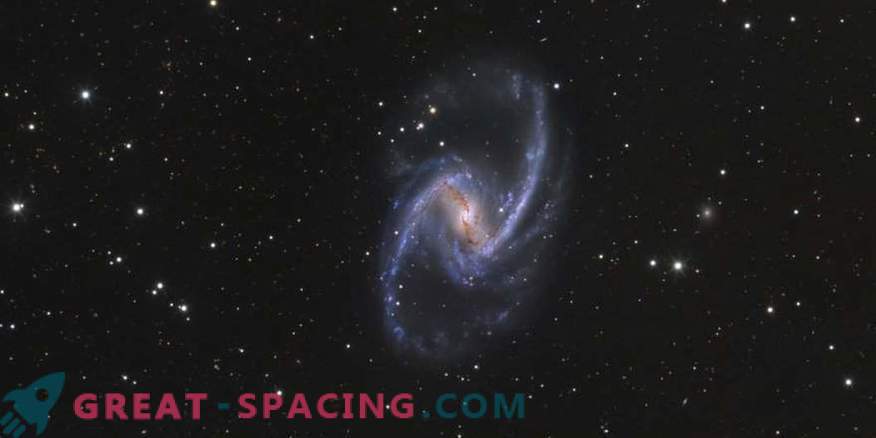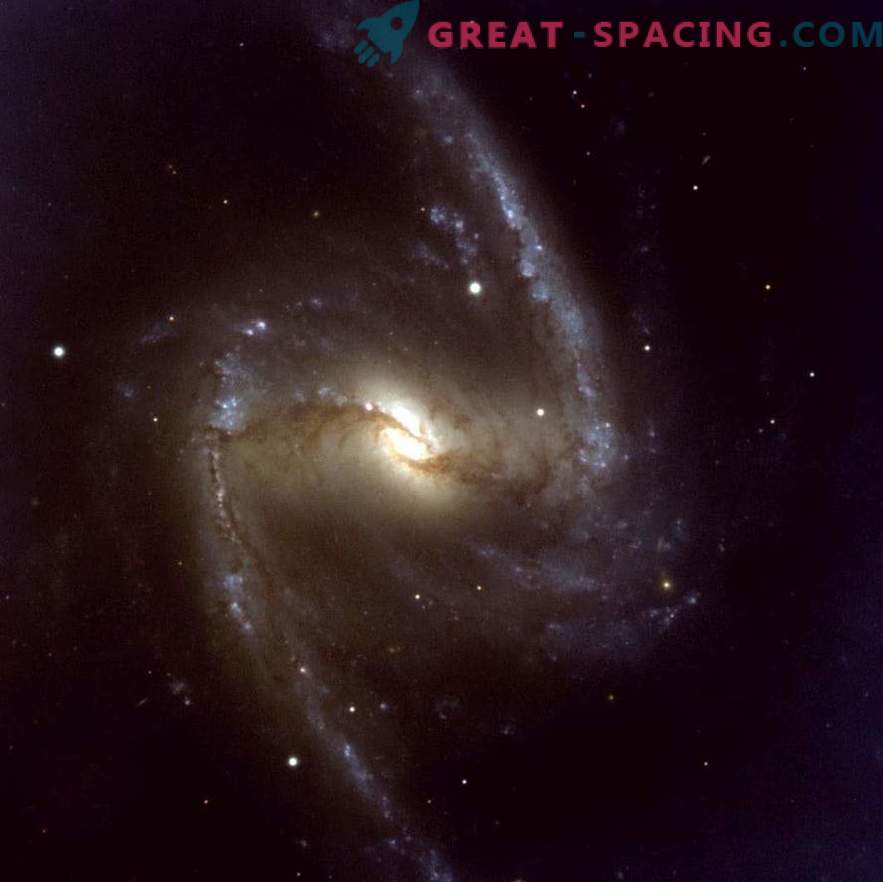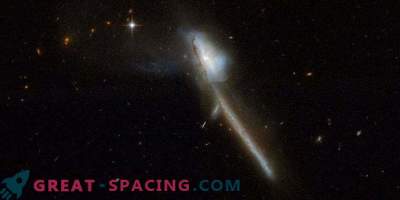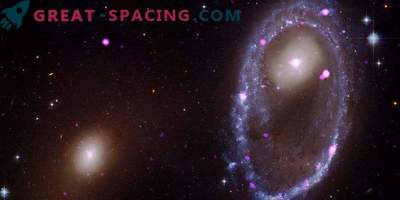
Scientists used the Very Large Telescope to carefully study the galaxy NGC 1365. It lives on the territory of the Cluster Cluster at a distance of 56 million light years from us. Refers to a spiral galactic type with a jumper and rings. Also considered a type of Seyfert galaxy. Previously, researchers observed it, but could not study at medium wavelengths of infrared radiation.
The observations in the infrared range are important because they allow us to consider the details of the molecular and ionized gas clouds, which helps to investigate the distribution and kinematics of the ancient stellar population dominant in mass. Such reviews are also able to provide important information about the history of stellar birth and the characteristics of the central galactic engines.

A three-color optical image of NGC 1365 created from three exposures from the FORS1 multi-mode instrument on the Very Large Telescope in the optical ranges B (blue), V (green) and R (red)
The team hoped that the NGC 1365 review in the near infrared region would help to learn more about the gas and stellar kinematics of the galaxy. They decided to focus on the area near the nucleus with a width of 2600 light years. A SINFONI spectrograph on the Very Large Telescope (Chile) was used for the study. The analysis found parts of the circumnuclear ring of star birth (radius - 3260 light years) and resolved some of the weaker regions in the inner ring and core (radius - 1000 light years). It turned out that the ring near the nucleus is endowed with strong radiating “hot spots” at optical wavelengths, where stellar outbursts in age reach less than 10 million years with an age gradient on the western side of the ring.
Also, scientists have noticed remarkable wide and narrow components of emission lines and hot dust (the temperature reaches about 1300 K). Similar properties are characteristic of active nuclei of type 1 galaxies.
The NGC 1365 stellar velocity field demonstrates full rotation. In addition, the ionized and molecular gas performs rotation in a general orientation at a stellar velocity. The analysis showed that the mass of the black hole is 5-10 times higher than the solar one, and the massiveness of the hot molecular gas is about 615 solar, which corresponds to the mass of the cold molecular gas at 200-800 million solar masses. The massiveness of ionized gas was estimated at 5.3 million solar.











































